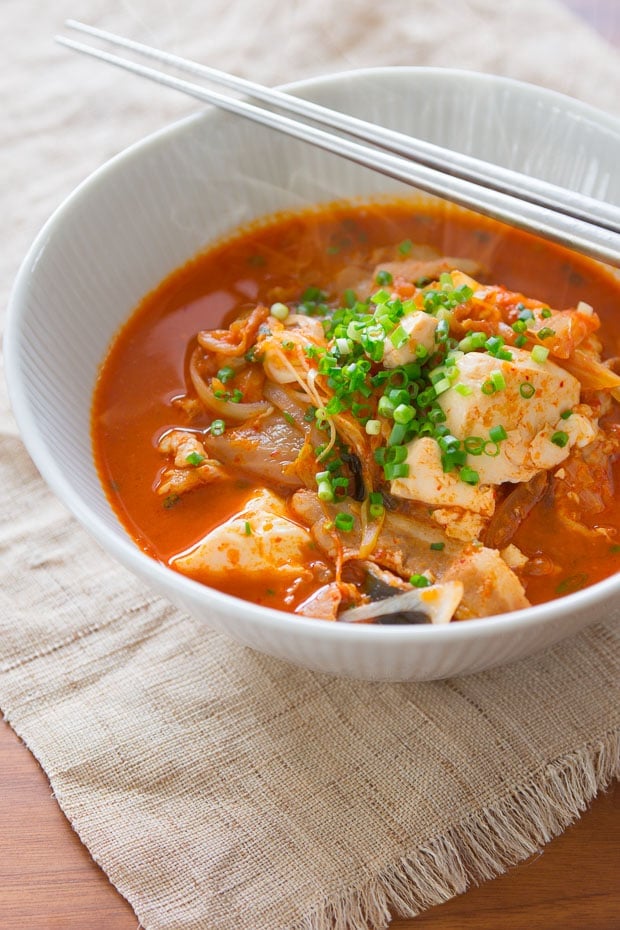When I’m not developing recipes for work, I tend to wing it in the kitchen, which is why my favorite dishes evolve over time. I’ve made a number of refinements to the recipe since i posted it, which is why I’ve decided to share an update with you. Below is the original post along with my revised recipe: Given my recent sojourn in Korea I thought it only appropriate to do a post I’ve been meaning to do for a very long time: Kimchi Jjigae. Depending on who you ask, you may see it transliterated as Kimchi Chigae, Kimchi Soup or Kimchi Stew, but it all refers to the same bubbling, red hot cauldron of soul satisfying soup made with kimchi, pork and tofu. I wasn’t able to find a ton of information on its origins, but it’s not a stretch to imagine this dish was conceived back in humbler times as a way to use old over-fermented kimchi along with a few scarce scraps of meat. When paired with a bowl of hot rice, it will jump start your internal furnace and chase away even the most frigid of winter chills. Like its German cousin sauerkraut, the various strains of Lactobacillus in kimchi convert the sugars in the cabbage into acids over time. At some point, most people find that kimchi gets too tart, making it unpleasant to eat straight out of the jar, but this is the perfect time to turn it into Kimchi Jjigae. The tartness mellows out as it stews with the pork belly and it helps to balance the rich fat from the belly. For those that have never had it before, Kimchi Jjigae may look like it packs a face-melting punch, but it’s not nearly as spicy as it looks. Unlike some Latin American chili peppers, Korean chilies are less potent, contributing sweetness in addition to heat. Of course if you like things scorching hot like me, you can crank the volume by adding more gochugaru. While every household has their own secrets for making their kimchi jjigae, here are mine:
Marinate the meat - It may seem silly to marinate something that’s going to be cooking in a liquid but the marinade caramelizes as you fry the meat, which gives the soup more depth. Use the kimchi juice - This is the red liquid that is released from the cabbage as it’s being pickled. Every package will have some at the bottom and you can squeeze the kimchi with your hands to get more. This stew is even better with homemade kimchi, and I have a fairly easy recipe for Small Batch Kimchi that demystifies the process. Add a bit of doengjang - Doengjang is a fermented soybean paste similar to miso that packs a wallop of umami and adds a wonderfully earthy taste to the jjigae. Add butter at the end - This may sound really odd, but it thickens the soup and gives it a wonderful richness without being greasy. The key is to add it just before serving so it emulsifies in the soup (if you add it too early the milk solids and fat will separate and make the soup oily)
More Korean Classics
Doenjang Jjigae Kkaennip Kimchi
📖 Recipe







